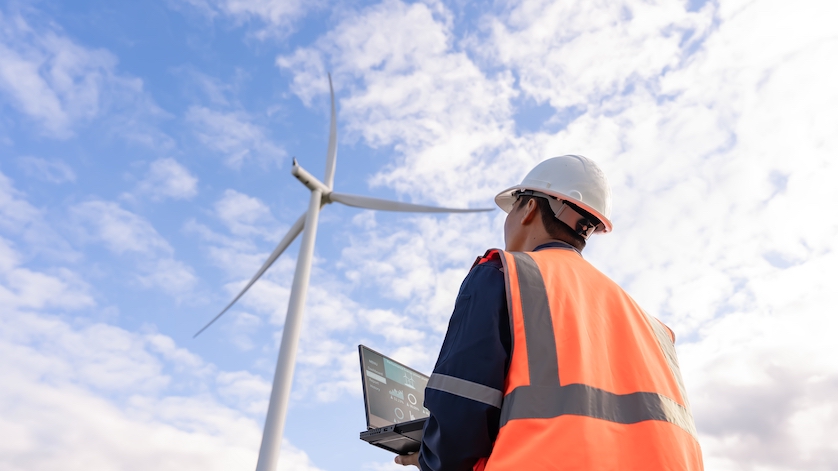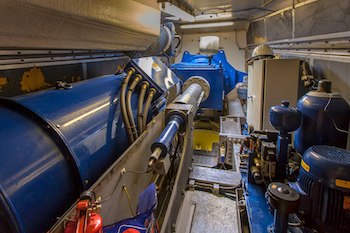
The US and the world are installing more wind turbines than ever as a source of clean renewable energy. WIKA offers a range of pressure and temperature solutions that make turbine control easier and more reliable than ever.
In fields, hills, and shorelines around the world, wind turbines are increasingly a part of the landscape. And for good reason. Not only is wind energy clean and renewable, but it is also abundant and reliable. Wind farms, along with solar and hydropower plants and hydrogen vehicles, play an important role in reducing our reliance on fossil fuels and creating carbon-neutral economies.
Modern wind turbines rely on interconnected systems to control the components and ensure that the equipment doesn’t overheat. WIKA has decades of experience working with and advising wind power plants, and we offer a variety of measurement products for the industry’s toughest challenges.
Measurement Solutions for Wind Turbine Lubrication Systems
A major manufacturer of fluid control equipment was looking for a pressure transmitter to control the pump that pushes lubrication oil into the filter. In the past, they’ve had quality issues with their suppliers’ pressure transmitters and switches. Moreover, this application sometimes experiences significant overpressure, but the lubrication oil isn’t clean so they couldn’t use an overpressure protector.
Solution: After consulting with this manufacturer, WIKA recommended the A-10 pressure transmitter. Ideal for hydraulic and pneumatic applications, this industrial pressure sensor has a measuring range up to 14,500 psi (1,000 bar), so there is no need for a separate device to protect against overpressure.
Similarly, another customer wanted to measure the lubricant pressure of their wind gearbox’s oil pumps, as well as the pump’s operating temperature. We recommended both the A-10 pressure transmitter and TR10 resistance thermometer, and this joint solution met all their performance expectations for their high-vibration applications.
Measurement Solutions for Wind Turbine Cooling Systems
The components in wind turbines produce a lot of heat, which needs to be transferred to other media or dissipated into the air. A global specialist in water cooling was looking for a company that could supply both the temperature and pressure sensors for their specialized systems.
Solution: One of the many benefits of partnering with WIKA is that we are a one-stop shop for measurement solutions. To ensure the optimal operation of their water-cooling systems, this manufacturer needed three products: temperature sensor to monitor the water temperature, pressure gauge for on-site readings of the water pressure, and pressure transmitter for remote monitoring of the water pressure.
WIKA came up with a package of three high-quality instruments:
- An earlier generation of the TR31 OEM miniature resistance thermometer. This Pt100 RTD sensor with Class A accuracy offered 24/7 monitoring of the water temperature to ensure optimal cooling of heated components.
- An earlier generation of the 063 Bourdon tube pressure gauge. This mechanical gauge with output signal has an easy-to-read display for ranges from 0…1 bar (14.5 psi) to 0…1,000 bar (14,500 psi).
- The A-10 for off-site monitoring of the cooling water’s pressure.
Measurement Solutions for Wind Turbine Braking Systems’ Hydraulic Units
In general, wind turbines begin to produce electricity when the blades spin at 9 mph (15 kph). This is the cut-in speed. With more wind, the blades spin faster and generate more energy – but this linear progression continues only until it reaches its rated speed, usually around 30 mph (48 kph). Faster windspeeds after this will not result in more kilowatts of power. In fact, too much wind is unsafe as it strains the rotor and can cause long-term damage. The upper limit, or cut-off speed, is typically 50–55 mph (80–90 kph).
A two-tier braking system protects turbines from winds above the cut-off speed. The primary system is aerodynamic. As the pitch of the blades changes, so do the forces acting upon them. Blades that are flush with the wind direction do not counter resistance, which means that they do not turn. The yaw control system rotates the nacelle to align the blades with or against the wind. The secondary system is mechanical braking, or active brakes.
Solution: Hydraulic circuits control a wind turbine’s pitch and yaw systems, using pressure feedback to change the angle of the blades and rotation of the nacelle. Hydraulics also help apply brake pressure to slow down the rotor, when necessary, or to stop it from moving altogether.
The A-10 is found in thousands of wind turbine hydraulic braking systems around the world. Our customers appreciate this compact pressure transmitter’s German quality and competitive pricing, and rely on it to perform reliably where competitors’ products have failed.
Industrial Pressure Transmitter for Extreme Conditions
WIKA has designed the A-10 industrial pressure sensor to withstand extreme working conditions. Piezoresistive sensors and thin-film technology make it resistant to vibration, shock, temperature variations, and radio frequency interference (RFI). A stainless steel welded measuring cell eliminates the need for soft sealing materials that may deteriorate over time. Precision engineering and state-of-the-art manufacturing ensure its long-term reliability. A variety of measuring ranges, signal outputs, and electrical and pressure connections makes it an excellent solution for a wind turbine’s various systems and subsystems.
WIKA USA, Your Partner for Renewable Energy Technology
WIKA is committed to green energy, helping OEMs and industries – from mobile working machines to aerospace – meet their environmental goals. Moreover, we live out this philosophy in our facilities across the globe. As one example, thanks to a partnership with Georgia Power’s Make Ready Electric Transportation Program, WIKA USA’s headquarters will soon have EV (electric vehicles) charging equipment for our employees’ use.
Contact us for more information about the A-10 industrial pressure transmitter and other measurement solutions that can help your business operate more economically, efficiently, and sustainably.
Products mentioned in this article:
- A-10 pressure transmitter for general industrial applications
- TR10-2 industrial RTD assembly, spring loaded (head internal)
- TR10-4 industrial RTD assembly, spring loaded (neck extension external)
- TR31 OEM miniature resistance thermometer
- PGT23.063 Bourdon tube pressure gauge with output signal, safety version



